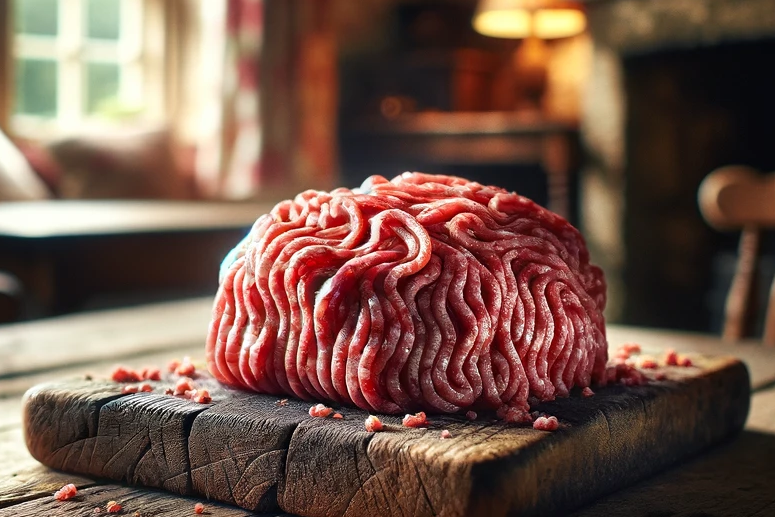Minced pork

When looking for a balanced diet for our dogs, we often come across a variety of ingredients that can offer both advantages and disadvantages. One such ingredient that causes debate in the diet of our four-legged friends is minced pork. While it may seem like an excellent source of protein at first glance, it's important to take a closer look at the potential benefits and drawbacks of this meat product. In this article, we'll take a comprehensive look at ground pork and analyze what it is, as well as discuss its potential benefits and risks in a dog's diet.
What is minced pork?
Minced pork, also known as pork mince, is obtained by grinding pork. It can come from different parts of the pig and can vary depending on its fat content. In the human diet, it is a popular ingredient in a variety of dishes, from meatballs to bolognese. In dog food, it is sometimes added to regular food as a source of protein or as a flavor supplement.
Benefits of minced pork for dogs
Source of protein
Minced pork is rich in protein, which is essential for building and repairing muscle tissue and for the general health of dogs.
Taste and acceptability
Many dogs like the taste of ground pork, making it a useful ingredient to increase food acceptance in picky eaters.
Accessibility and versatility
As a widely available ingredient in supermarkets, minced pork is easy to source and can be incorporated into dogs' diets in a variety of ways, whether boiled, roasted or as part of home-cooked meals.
Disadvantages of minced pork for dogs
Risk of pathogens
Raw minced pork can contain pathogens such as salmonella, listeria and the Aujeszky's disease virus (pseudogout), which is particularly dangerous for dogs. These pathogens can lead to serious health problems.
High fat content
Minced pork can have a high fat content, which can lead to obesity, pancreatitis and other health problems if consumed in excess.
Unbalanced diet
Feeding ground pork alone can lead to an unbalanced diet, as dogs need a variety of nutrients that cannot be provided by pork alone.
A balanced judgment
While ground pork can be a tasty and protein-rich addition to your dog's diet, it's important to consider the potential risks. The decision of whether and how much ground pork to include in your dog's diet should be carefully considered. It is crucial to cook the meat thoroughly before feeding to minimize the risk of pathogens. It is also important to ensure that minced pork is only part of a balanced diet that contains all the necessary nutrients for your dog.
If you notice any signs of hypersensitivity or poisoning in your dog, you should see your vet immediately. We are not a substitute for a vet, but we try to be as accurate as possible. Every dog reacts differently and we recommend you get a second opinion or consult your vet if in doubt.
Stay healthy and take good care of your four-legged friend!😊
Similar to Minced pork
Ground poultry, also known as poultry mince, is made from shredded meat from chickens, turkeys or other types of poultry. It can come from different parts of the poultry, including breast, thighs...
Chicken mince is minced meat from chickens, usually from the breast or thigh. It can be processed raw or cooked and has a fine or coarse consistency. Chicken mince is often mixed with spices, herbs...
Minced lamb, also known as lamb mince, is minced meat obtained from various parts of the lamb. This meat is usually put through a mincer to achieve a fine, uniform texture. Lamb mince is widely used...
Ground beef, also known as minced beef, is minced beef obtained by grinding pieces of meat. It is known for its versatility in the kitchen and provides a rich source of protein, essential fatty...



